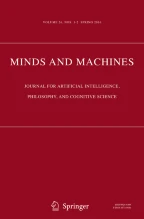Abstract
Rips, in The Psychology of Proof, argues that, through the processes of evolution, logic (e.g., modus ponens) has become established in the human mind as the basis for thinking, and that production systems rest on this foundation. In this paper we defend the converse argument that, through evolution, a production system architecture has become the basis for human thinking, and that formal logics rest on this production system and the accompanying mechanisms for recognition and search. It is through the “automaticity” of the execution of productions that we experience the compellingness of deductive arguments.
Similar content being viewed by others
Explore related subjects
Discover the latest articles, news and stories from top researchers in related subjects.References
Anderson, J. R. (1983), The Architecture of Cognition. Cambridge, MA: Harvard University Press.
Larkin, J. H. & Simon, H. A. (1987), ‘Why a diagram is (sometimes) worth ten thousand words’, Cognitive Science 11, 65–99.
Neves, D. M. (1978), ‘A computer program that learns algebraic procedures by examining examples and working problems in a textbook’, Proceedings of the Second National Conference of the Canadian Society for Computational Studies of Intelligence, pp. 191–195.
Newell, A. (1990), Unified Theories of Cognition. Cambridge, MA: Harvard University Press.
Newell, A. & Simon, H. A. (1972), Human Problem Solving. Englewood Cliffs, NJ: Prentice-Hall.
Richman, H. B., Staszewski, J. J., & Simon, H. A. (1995), ‘Simulation of expert memory using EPAM IV’, The Psychological Review 102, 305–330.
Rips, Lance J. (1994), The Psychology of Proof. Cambridge, MA: The MIT Press.
Whitehead, A. N. & Russell, B. (1935), Principia Mathematica. Cambridge, GB: Cambridge University Press.
Zhu, X. & Simon, H. A. (1987) ‘Learning mathematics from examples and by doing’, Cognition and Instruction 4, 137–166.
Author information
Authors and Affiliations
Rights and permissions
About this article
Cite this article
Eisenstadt, S.A., Simon, H.A. Logic and Thought. Minds and Machines 7, 365–385 (1997). https://doi.org/10.1023/A:1008299628430
Issue Date:
DOI: https://doi.org/10.1023/A:1008299628430
